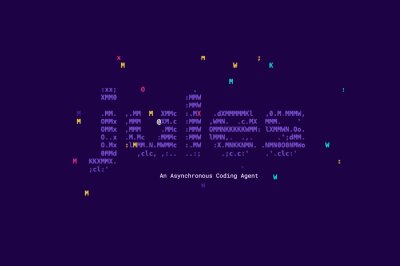LIDA
Automatic data exploration and visualisation generation.
data analysis charts visualizationsTool Information
| Primary Task | Data visualization |
|---|---|
| Category | data-and-analytics |
| Sub Categories | data-analysis data-visualization |
| API Available | Yes |
| Open Source | Yes |
| Country | United States |
LIDA is a powerful tool that automates data exploration and generates visualizations and infographics using large language models (LLMs) like ChatGPT and GPT4. It provides a conversational interface for automatic generation of grammar-agnostic visualizations from data. LIDA consists of four modules: the Summarizer, which converts data into a compact natural language summary; the Goal Explorer, which enumerates visualization goals based on the data; the VisGenerator, which generates, refines, executes, and filters visualization code; and the Infographer, which produces data-faithful stylized graphics using image generation models.LIDA is compatible with any programming language or visualization grammar, allowing users to create visualizations in Python (e.g., Altair, Matplotlib, Seaborn), R, C++, and more. It also offers operations on existing visualizations, such as visualization explanation, self-evaluation, automatic repair, and recommendation.The tool supports various capabilities, including data summarization, automated data exploration, grammar-agnostic visualizations, and infographics generation. It leverages the language modeling and code-writing capabilities of LLMs, enabling core automated visualization capabilities. LIDA also provides operations on generated visualizations, such as visualization explanation, self-evaluation, visualization repair, and visualization recommendations.LIDA's architecture combines LLMs and image generation models (IGMs) to address the multi-stage generation problem of visualization creation. It is open-source and offers a Python API and a hybrid user interface for interactive chart, infographic, and data story generation.While LIDA has limitations with visualization grammars not well-represented in the LLM's training dataset and performance variations depending on the choice of visualization libraries and code generation capabilities, it remains a powerful tool for automating the visualization generation process.
The Power CAT team is part of the Microsoft Business Applications and Platform engineering organization. We work with a specific group of key enterprise customers and do whatever it takes to ensure their success. We are a diverse group of technical architects, community managers, program managers, developers, and content creators, located all over the world, all sharing a deep passion for the possibilities of low-code.
| Pros |
|---|
|
| Cons |
|---|
|
Frequently Asked Questions
1. What is the purpose of LIDA?
LIDA automates data exploration and the generation of visualizations and infographics using large language models (LLMs). Its purpose is to provide a conversational interface for the automatic generation of grammar-agnostic visualizations from data.
2. How does LIDA use large language models like ChatGPT and GPT4?
LIDA uses large language models like ChatGPT and GPT4 to enable core automated visualization capabilities. It leverages their language modeling and code-writing capabilities, which are crucial for data summarization, goal exploration, visualization generation, and infographics generation. Additionally, LIDA uses LLMs for operations on existing visualizations, such as visualization explanation, self-evaluation, visualization repair, and visualization recommendations.
3. What are the four modules of LIDA and their functions?
LIDA consists of four modules: the Summarizer, which converts data into a compact natural language summary; the Goal Explorer, which enumerates visualization goals based on the data; the VisGenerator, which generates, refines, executes, and filters visualization code; and the Infographer, which produces data-faithful stylized graphics using image generation models.
4. Which programming languages does LIDA support?
LIDA is compatible with any programming language or visualization grammar. This flexibility allows users to create visualizations in languages such as Python, R, C++, and more.
5. Can LIDA operate on existing visualizations?
Yes, LIDA can operate on existing visualizations. It offers operations such as visualization explanation, self-evaluation, automatic repair, and recommendation based on the existing visualizations.
6. What capabilities does LIDA offer?
LIDA offers a variety of capabilities including data summarization, automated data exploration, grammar-agnostic visualization generation, and infographics generation. Furthermore, it provides operations on existing visualizations such as visualization explanation, self-evaluation, automatic repair, and recommendation.
7. What is the role of image generation models in LIDA?
Image generation models (IGMs) in LIDA play a crucial role in producing data-faithful stylized graphics. This contributes to the Infographer function, which transforms data into rich, embellished, engaging stylized infographics.
8. What are some potential limitations of LIDA?
The limitations of LIDA include performance variations that can occur depending on the choice of visualization libraries and code generation capabilities. Additionally, it may not work well with visualization grammars that are not well represented in the LLM's training dataset. LIDA also requires code execution and while efforts are made to constrain the scope of generated code, a sandbox environment is recommended for safe code execution.
9. Are there any example visualizations or infographics created with LIDA?
Yes, there are examples of visualizations and infographics created with LIDA. However, these are not explicitly detailed on their website.
10. Is LIDA an open-source tool?
Yes, LIDA is an open-source tool. This allows users to access its source code for customization and improvements. LIDA can be accessed and downloaded on GitHub.
11. How does LIDA enable automated data exploration?
LIDA enables automated data exploration via its Goal Explorer module. This function automatically generates meaningful visualization goals based on the dataset, providing exploratory data analysis.
12. Does LIDA generate visualization code?
Yes, LIDA can generate visualization code. This functionality is primarily executed by the VisGenerator module that generates, refines, executes, and filters the visualization code.
13. Can LIDA create visualizations in Python (e.g., Altair, Matplotlib, Seaborn)?
Yes, LIDA can generate visualizations in Python using libraries including but not limited to Altair, Matplotlib, and Seaborn, confirming its grammar-agnostic feature.
14. What is the functionality of LIDA's Summarizer module?
The Summarizer module in LIDA converts data into a rich but compact natural language summary. This serves as the grounding context for all subsequent operations.
15. How does LIDA's Goal Explorer module identify visualization goals?
LIDA's Goal Explorer module identifies visualization goals by enumerating them based on the data. It provides a fully automated mode for visualisation goal generation.
16. Does LIDA offer a Python API and hybrid user interface?
Yes, LIDA offers a Python API and a hybrid user interface. The hybrid interface supports direct manipulation and multilingual natural language, enabling interactive chart, infographic, and data story generation.
17. Can LIDA automatically repair visualizations?
Yes, LIDA can automatically repair visualizations. It provides methods to improve visualizations either through self-evaluation feedback or repair based on user-provided or compile feedback.
18. Can LIDA's performance change based on the choice of visualization libraries?
Yes, LIDA's performance can indeed change based on the choice of visualization libraries. Moreover, the degrees of freedom accorded to the model in generating visualizations can also affect its performance.
19. What is LIDA's Infographer module and what does it do?
The Infographer module in LIDA is responsible for creating data-faithful stylized graphics using image generation models. It aids in the transformation of data into rich, engaging stylized infographics.
20. How does LIDA handle visualization explanations and self-evaluations?
LIDA handles visualization explanations and self-evaluations through its operations on generated visualizations. For explanations, it provides comprehensive descriptions of visualization code, while for self-evaluations, it uses LLMs like GPT-3.5 and GPT-4 to generate multi-dimensional evaluation scores for visualizations represented as code.
Comments
Similar Tools
Related News

The landscape of software development is undergoing a profound transformation, propelled by the relentless march of artificial ...
@devadigax | Oct 02, 2025

In a significant move poised to redefine the digital search experience, Brave, the privacy-centric browser and search engine, h...
@devadigax | Sep 29, 2025

In a significant development echoing the dynamic and often tumultuous world of technology startups, former Yahoo CEO and long-t...
@devadigax | Sep 29, 2025

Redmond, WA – In a move set to redefine workplace productivity, Microsoft has officially launched a groundbreaking new feature,...
@devadigax | Sep 29, 2025

Microsoft has begun rolling out a significant update to its Photos app on Windows 11 that leverages artificial intelligence (AI...
@devadigax | Sep 26, 2025

Juicebox, a San Francisco-based AI recruiting startup, has raised $30 million in a Series A funding round led by Sequoia Capita...
@devadigax | Sep 25, 2025
 AI Tool Buzz
AI Tool Buzz
 Supadash
Supadash